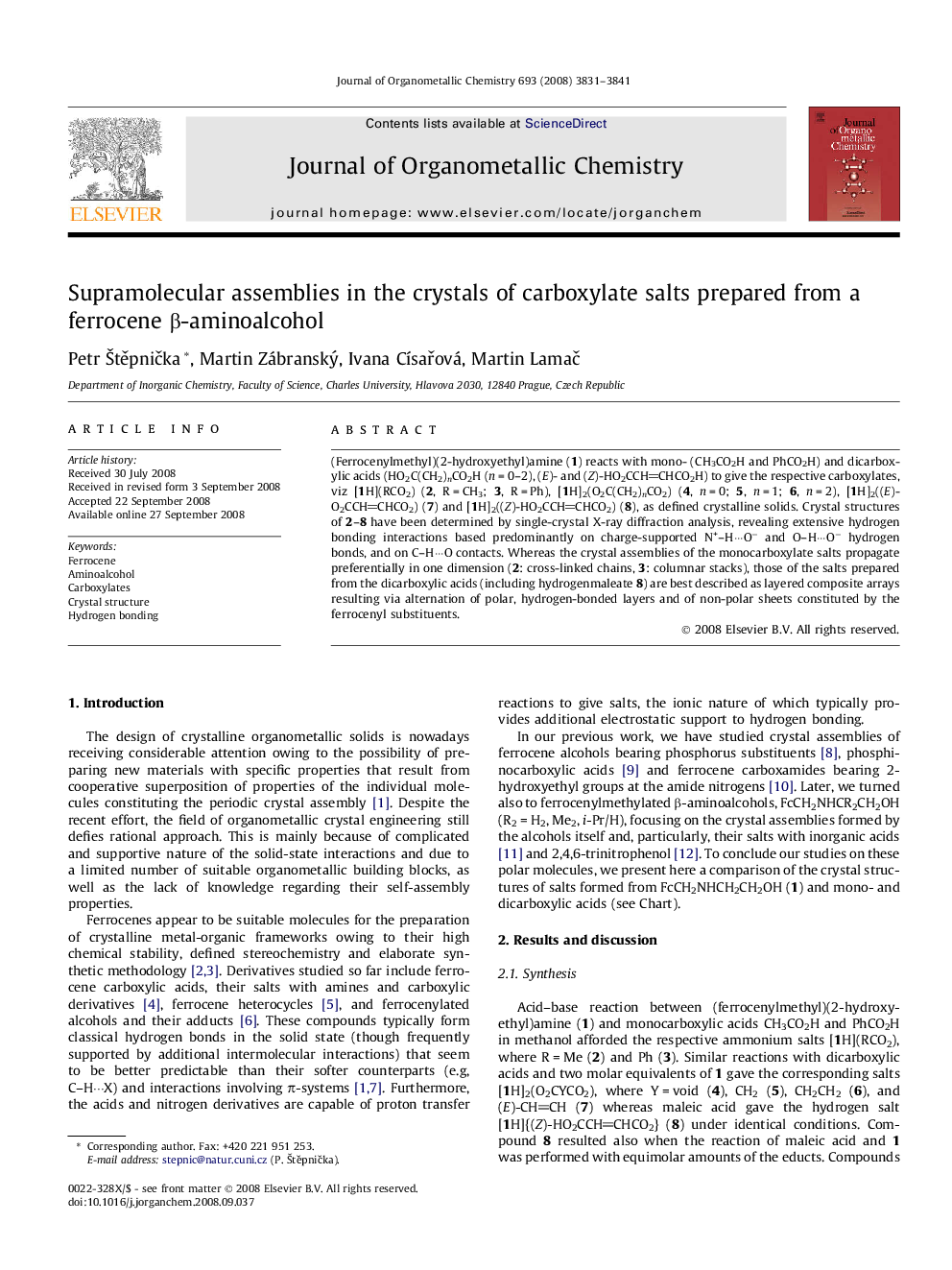| Article ID | Journal | Published Year | Pages | File Type |
|---|---|---|---|---|
| 1326869 | Journal of Organometallic Chemistry | 2008 | 11 Pages |
(Ferrocenylmethyl)(2-hydroxyethyl)amine (1) reacts with mono- (CH3CO2H and PhCO2H) and dicarboxylic acids (HO2C(CH2)nCO2H (n = 0–2), (E)- and (Z)-HO2CCHCHCO2H) to give the respective carboxylates, viz [1H](RCO2) (2, R = CH3; 3, R = Ph), [1H]2(O2C(CH2)nCO2) (4, n = 0; 5, n = 1; 6, n = 2), [1H]2((E)-O2CCHCHCO2) (7) and [1H]2((Z)-HO2CCHCHCO2) (8), as defined crystalline solids. Crystal structures of 2–8 have been determined by single-crystal X-ray diffraction analysis, revealing extensive hydrogen bonding interactions based predominantly on charge-supported N+–H···O− and O–H···O− hydrogen bonds, and on C–H···O contacts. Whereas the crystal assemblies of the monocarboxylate salts propagate preferentially in one dimension (2: cross-linked chains, 3: columnar stacks), those of the salts prepared from the dicarboxylic acids (including hydrogenmaleate 8) are best described as layered composite arrays resulting via alternation of polar, hydrogen-bonded layers and of non-polar sheets constituted by the ferrocenyl substituents.
Graphical abstractReaction of FcCH2NHCH2CH2OH (Fc = ferrocenyl) with mono- (RCO2H; R = Me and Ph) and dicarboxylic acids (HO2C(CH2)nCO2H (n = 0–2), (E)- and (Z)-HO2CCHCHCO2H) affords the respective carboxylates as defined crystalline solids. In the solid state, these salts form supramolecular assemblies via charge-supported N+–H···O− and O–H···O− hydrogen bonds, and via C–H···O contacts. Whereas the acetate and benzoate form one-dimensional supramolecular arrays, the salts prepared from the dicarboxylic acids form complicated assemblies by alternation of polar, hydrogen-bonded layers and of non-polar sheets accomodating the ferrocenyl substituents.Figure optionsDownload full-size imageDownload as PowerPoint slide
